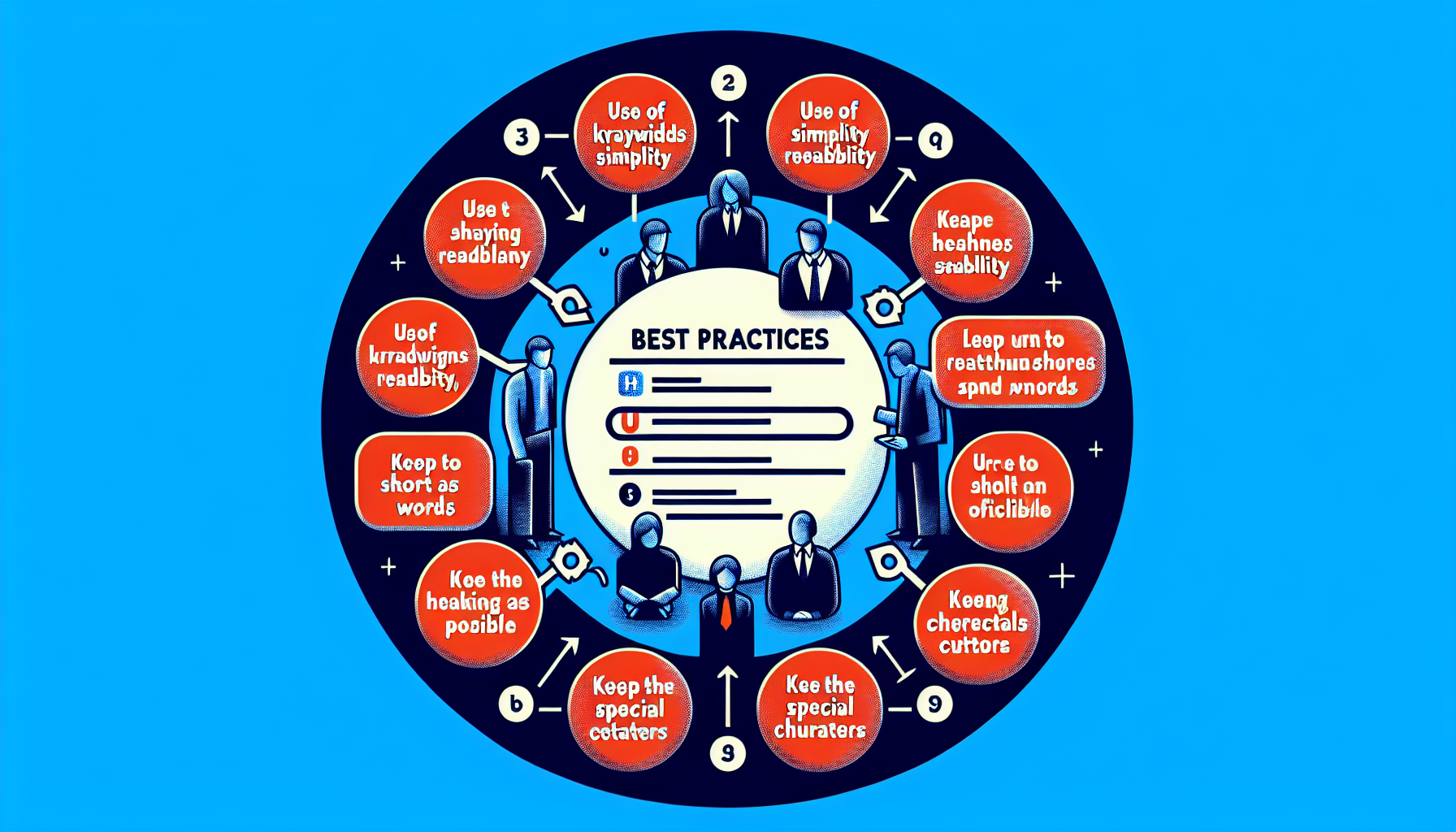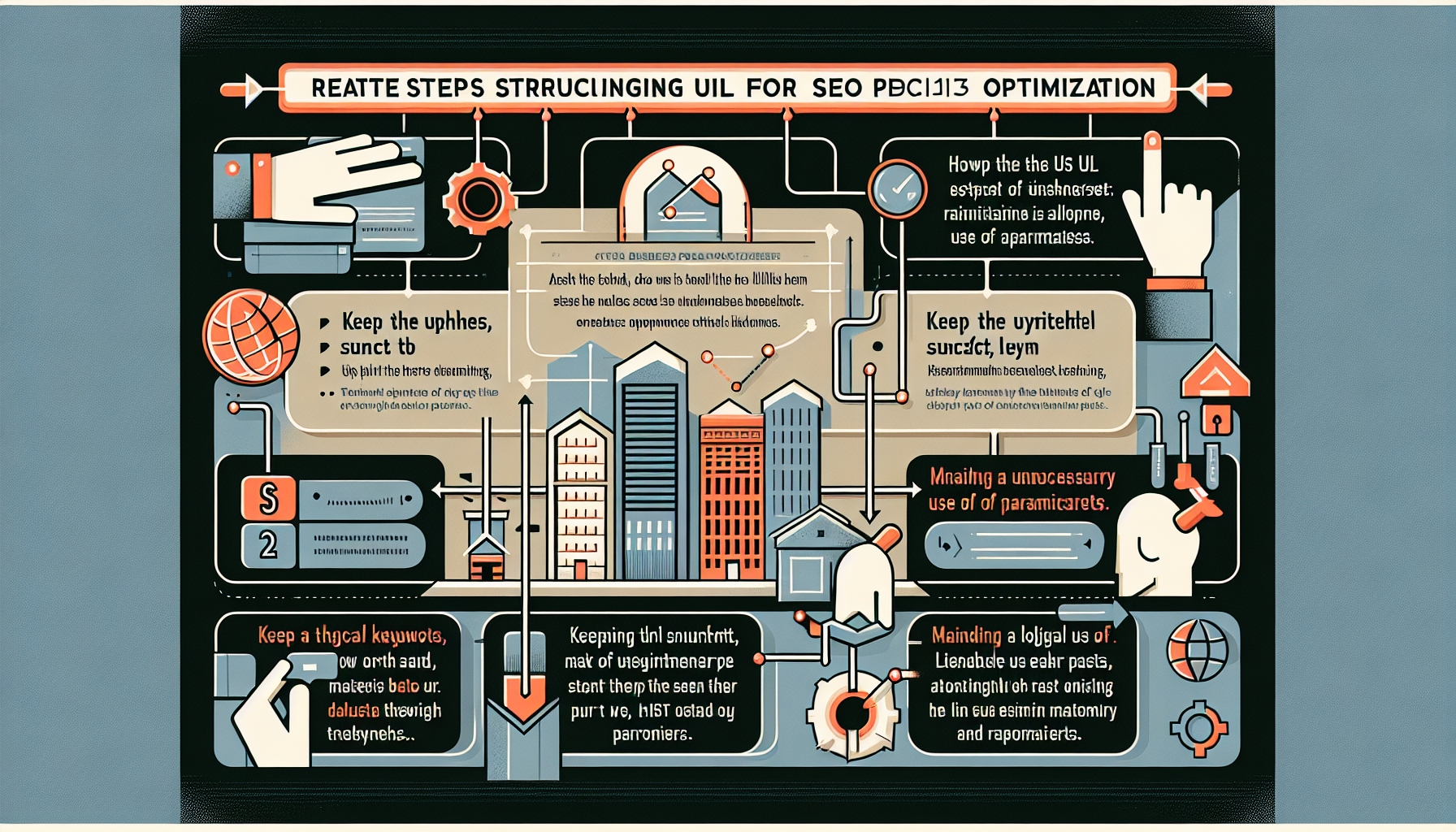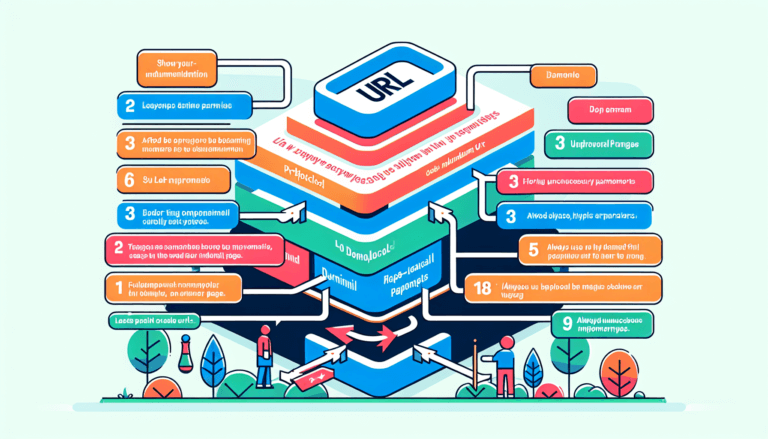Effective URL structure is a critical component in Search Engine Optimization (SEO) for several reasons. Firstly, well-structured URLs improve user experience as they provide insights into the content of the page, making it easier for users to navigate your site. When users can predict the content of a webpage from its URL, they are more likely to click on it, reducing bounce rates and increasing the overall dwell time. This, in turn, signals to search engines that the content is valuable and relevant.
In addition, search engines like Google use URLs to better understand and index your content. A clear and descriptive URL structure allows search engines to quickly ascertain the topic and context of a page, which can influence its ranking. URLs that are concise and well-formed are more easily crawled by search engine bots, ensuring that all important pages on your site get indexed efficiently.
Another critical factor is the influence of URL structure on link equity. When other websites link to your pages, the anchor text and the URL itself contribute to how search engines perceive the linked content. Clean and relevant URLs are more likely to be shared and linked to, enhancing your site’s authority and trustworthiness. Moreover, well-structured URLs are easier to share across different platforms and are more likely to be clicked on when shared, enhancing referral traffic.
Lastly, URL structure can also impact your site’s click-through rate (CTR) on search engine results pages (SERPs). A URL that includes relevant keywords or provides a clear description of the page’s content can attract more clicks, which is a positive ranking signal. Adequately descriptive URLs make your listings more attractive and relevant to users, potentially leading to higher organic traffic.
Best practices for creating SEO-friendly URLs

When crafting URLs that are optimized for search engines, making them straightforward and descriptive is key. Begin by ensuring that URLs are concise. A shorter URL is easier for users and search engines to read and comprehend. Aim to keep your URL length under 100 characters. Not only does this improve readability, but it also prevents truncation in search results, which helps maintain the clarity and impact of the URL.
Incorporating keywords that are relevant to the content of the page within the URL is another best practice. Doing so provides search engines with a clear indicator of the page’s topic, which can help improve its ranking for those keywords. However, it’s essential to avoid keyword stuffing, as overuse can result in penalties. Instead, place keywords naturally within the URL to maintain consistency and relevance.
For readability, use hyphens to separate words in a URL, rather than underscores or spaces. Hyphens are recognized by search engines as word separators, which assists in easier parsing and indexing of individual words. For example, use “best-seo-practices” rather than “bestseopractices” or “bestseopractices“. This small adjustment can significantly impact how search engines and users interpret the structure of your URLs.
Another best practice is to use a consistent and logical hierarchy within your URL structure that mirrors your site architecture. This approach not only benefits search engines but also helps users understand the content and context of the page they’re visiting. For instance, use a structure like “example.com/category/subcategory/page-name” to reflect the organizational framework of your site. Keeping the hierarchy logical and standardized facilitates easier navigation and indexing.
It’s also vital to avoid using unneeded parameters and session IDs in your URLs. Such elements can create lengthy, obscure URLs that are difficult for search engines and users to understand. Whenever possible, rewrite dynamic URLs to make them appear static, as static URLs are typically more user-friendly and easier for search engines to index. Clean URLs are easier to remember, leading to better user experience and improved SEO performance.
Lastly, ensure that your URLs are in lowercase. URLs are case-sensitive, and having multiple cases can lead to duplicate content issues. Standardizing to lowercase URLs prevents this kind of error, making your URLs cleaner and more consistent.
Implementing these best practices ensures that your URLs are not only optimized for SEO but also user-friendly. This dual benefit can lead to improved search engine rankings and a better overall experience for your visitors.
Common mistakes to avoid

URL optimization is essential for SEO success, but many website owners and digital marketers fall prey to common pitfalls that can sabotage their efforts. One of the most frequent mistakes is creating overly complex or lengthy URLs. Long URLs can confuse both users and search engine crawlers, leading to poor usability and indexing issues. Aim to keep URLs clear, concise, and relevant to the content, avoiding excessive use of parameters, which can create unnecessarily convoluted URLs.
Another significant error is neglecting to use hyphens as word separators within the URL. This small detail is often overlooked, but it plays a crucial role in readability and search engine parsing. Using underscores or omitting separators entirely can impair the visibility of individual words to search engines, adversely affecting your ranking potential. Always use hyphens to separate words to ensure URLs are easily readable and understandable by both users and search engines.
Avoiding keyword stuffing in URLs is another critical consideration. While incorporating relevant keywords in your URLs can boost SEO, overdoing it can have the opposite effect. Search engines may penalize sites deemed to be engaging in keyword stuffing, which can lower your search rankings. Keywords should be used naturally and sparingly, reflecting the actual content of the page without overemphasizing them.
Ignoring the need for a logical and hierarchical structure in URLs is another common mistake. A disorganized URL structure can lead to poor user experience and hinder search engine crawlers from properly indexing your site. It’s important to map out a coherent structure that mirrors your site’s architecture, making it intuitive for both users and search engines. Inconsistent or flat structures can cause navigation headaches and reduce your site’s SEO effectiveness.
Failing to redirect old URLs properly when updating or restructuring your website is another misstep that can cost you SEO equity. Whenever you change a URL, it’s imperative to implement 301 redirects to ensure that any existing link equity is transferred to the new URL. Neglecting this step can result in broken links, diminished user experience, and a loss of SEO value accrued to the old URL. Properly managing redirects helps maintain continuity and preserves your site’s ranking.
Producing duplicate content through inconsistent URL practices can dilute your SEO efforts. This can happen when variations of URLs (e.g., with or without “www,” or using different cases) lead to identical content. Search engines struggle with duplicate content and may not know which URL to prioritize, which can hurt your rankings. Ensuring that your URLs are consistent and canonicalizing them when necessary can help mitigate this issue and sustain your SEO performance.
The role of keywords in URLs
Keywords play an important role in URLs for numerous reasons. Firstly, they serve as a signal to search engines about the content of the page. When search engines crawl your URLs, they can quickly identify the main topic of the page based on the keywords present. This helps in better indexing and can potentially improve the ranking of your page for those specific terms. A well-chosen keyword within the URL can act like a beacon, guiding search engines to understand and prioritize your page for relevant searches.
Using keywords in URLs can also enhance the clarity and relevance for users. When potential visitors see a URL with clear, readable keywords that match their search query, it builds trust and makes them more likely to click on the link. This relevance can improve the click-through rate (CTR) from search engine results pages (SERPs), leading to an increase in organic traffic. Moreover, URLs that include keywords aligned with user intent can make the site appear more professional and authoritative, bolstering the overall user experience.
Furthermore, keywords in URLs can significantly aid in link sharing and backlink strategies. When people share your links on social media, forums, or other websites, a keyword-rich URL offers immediate context about the page’s content, even when the surrounding text is minimal. This context can attract more clicks and engagement, thus strengthening your backlink profile. A stronger link profile translates to more referral traffic and improved domain authority, which are crucial factors for SEO success.
It’s important to note that while incorporating keywords in URLs can be beneficial, it should be done judiciously. Overloading URLs with too many keywords, a practice known as keyword stuffing, can lead to penalties from search engines. Instead, select one or two primary keywords that accurately describe the page content and integrate them naturally into the URL. This balanced approach helps in maintaining both user experience and SEO effectiveness.
In some cases, businesses might fall into the trap of modifying existing URLs to include keywords, hoping for a quick SEO boost. While this can occasionally yield positive results, it is not without risks. Changing URLs can disrupt the existing SEO equity and cause 404 errors if not managed properly. Therefore, it’s crucial to plan URL changes carefully and implement 301 redirects to preserve any ranking power and guide users to the new URLs without any hitches.
The strategic inclusion of keywords in your URLs is a powerful SEO tactic that boosts both search engine visibility and user engagement. However, it should be executed thoughtfully to avoid potential pitfalls and ensure sustained performance in search rankings. Use keywords as a tool to enhance, not overpower, your URL structure for optimal results.
Implementing URL changes and redirects

When making necessary changes to your URLs, it’s vital to approach the process meticulously to prevent disruptions in your SEO performance. One of the first steps is to perform a thorough audit of existing URLs to identify which ones need modification and why. This audit helps ensure that unnecessary changes are avoided and that essential URLs are targeted for optimization. Carefully planning the changes will help maintain the SEO equity that these URLs have accrued over time.
Once you’ve determined which URLs require alteration, the implementation of 301 redirects is critical. A 301 redirect is a permanent redirection from one URL to another, effectively transferring the link equity from the old URL to the new one. This transfer of SEO value is essential to maintain your rankings and avoid potential traffic loss. Redirects should be set up in your site’s .htaccess file for Apache servers, or through your website’s server configurations, to ensure they are implemented correctly.
When setting up 301 redirects, ensure that each old URL maps directly to the relevant new URL to avoid any confusion for search engine crawlers and users. Inconsistencies or multiple redirects can lead to redirect chains, which can dilute link equity and slow down page load times, ultimately harming user experience and SEO performance. Therefore, aim for a clear, direct mapping to sustain traffic flow and retain as much SEO value as possible.
Additionally, it’s beneficial to update all internal links to point directly to the new URLs rather than relying on redirects. Audit your site’s content, navigation menus, and sitemaps to ensure all internal references use the updated URLs. This step minimizes the reliance on redirects, which can enhance site speed and provide a smoother user experience.
Google Search Console and other analytics tools can be invaluable during this process. They allow you to monitor the impact of your URL changes, check for crawl errors, and verify that the redirects are functioning correctly. Regularly analyze your traffic data and search rankings post-implementation to ensure that there are no significant negative impacts. Monitoring these metrics helps you address any issues promptly and maintain your site’s SEO health.
Communicating changes to your audience can also be beneficial, particularly if the alterations involve URLs that receive high traffic or have many backlinks. Updating social media links, shared bookmarks, and reaching out to websites that link to the old URLs can help preserve your SEO efforts and ensure visitors are directed to the correct pages without encountering errors.
In cases where URL changes are necessary due to a rebranding or a major site overhaul, a comprehensive approach is required. Consider implementing a well-planned and thorough migration strategy that includes updating all site assets, submitting the updated sitemap to search engines, and thoroughly testing the new URLs. During such transitions, maintaining clear communication with stakeholders and leveraging professional tools and services can make the process smoother and more efficient.
Careful planning and execution of URL changes, supplemented by strategic use of 301 redirects, can help maintain SEO stability while improving site structure. By following best practices and continuously monitoring the impact, you can successfully navigate URL changes without compromising your search engine rankings or user experience.

